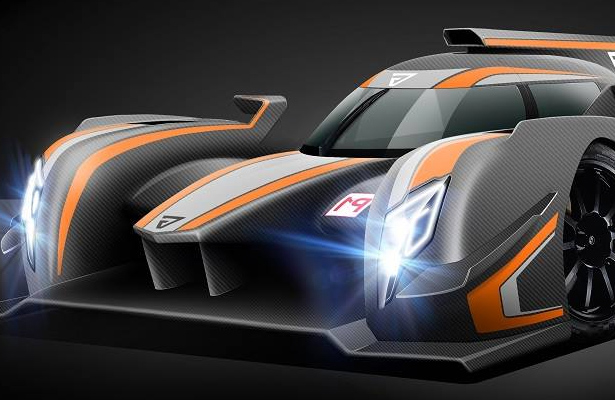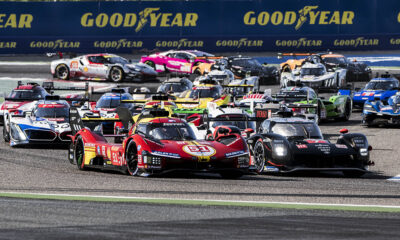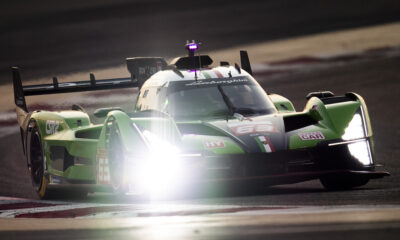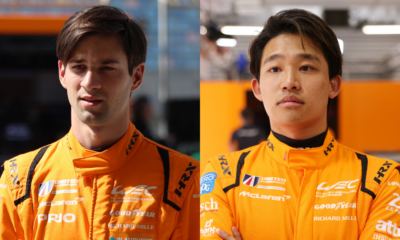
Image: Ginetta
Ginetta is open to evolutions of its new LMP1 car that could feature different bodywork, engine packages and branding tailored for specific customers, according to company chairman Lawrence Tomlinson.
The British constructor’s yet-to-be-named non-hybrid prototype will debut in the FIA World Endurance Championship next year, with pricing details for the base model having been released earlier this month.
Tomlinson said a run of ten chassis will be produced, with the target of having up to six cars competing in the LMP1 Privateer ranks by as early as 2018.
While the initial Ginettas are all expected to be in standard configuration, with the designated Mecachrome 3.4-liter V6 turbo engine, the possibility of a car adapted to a customer’s wishes also exists in the future.
“The bodywork, and how they want to use it, or different branding is a possibility,” Tomlinson told Sportscar365.
“Fundamentally as time went on, it would be up to the teams to come to us and say, ‘We want to use a different engine, we need this, we need that.’ We’d speak to new teams about it.”
The level of customization, which could be similar to IMSA’s DPi model in the allowance of different engine and bodywork packages on top of an existing prototype, is possible in LMP1 due to its current set of regulations, which does not lock in a car’s homologation for a set period of time.
While designing its car around the Mecachrome engine, Ginetta technical director Ewan Baldry said it would be able to fit other powerplants with modifications.
“We’re going to package-protect for that,” he told Sportscar365. “We’re having a gearbox design bolt straight to the back of that.
“However, we’ve packaged within the gearbox the ability to have some of the gearbox machined away so if someone’s using a longer V8 or something like that, the potential is there.”
Baldry said bodywork modifications would be “slightly more complicated” and could require a separate homologation from the FIA and ACO, but nothing that couldn’t be achieved within the rules.
“We as Ginetta can continually evolve the car, which can’t be done in LMP2,” he said. “We would just have to re-homologate. That gives us an opportunity and flexibility.
“We’re happy to talk to anybody about any kind of project or avenue they want to explore.”
Rebellion Racing, which ran a Rebellion-badged Oreca-built LMP1 non-hybrid from 2014-16, has been among the interested parties in Ginetta’s LMP1 project, although team manager Bart Hayden has essentially ruled out a return to the privateer subclass until 2019.
Hayden said two conditions: an increased car count and a closer gap to the LMP1 hybrids would have to be met before committing to a potential return to the top class.
Ginetta’s Baldry, meanwhile, is confident its new non-hybrid prototype will be competitive in the prototype landscape, estimating it should be 4-5 seconds per lap quicker than a new-for-2017 LMP2 car.
How close in performance the LMP1 non-hybrids get to the factory cars next year, however, remains to be seen.
“I think, right now, we should just be satisfied of the fact that there’s a very limited number of P1 Hybrids on the grid or Le Mans 2017 and probably Le Mans 2018,” Baldry said. “That’s a great opportunity people should see. It only takes one to fail to have [a non-hybrid] get onto the podium.
“It’s great for next year, that a privateer P1 manufacturer has a genuine shot of the overall podium.”
The Ginetta is expected to begin on-track testing in September, followed by customer deliveries early next year.
“The key thing for us is reliability, and we intend to do loads and loads of testing prior to the cars hitting the racetracks in 2018,” Tomlinson added.
“[Also], working with teams as our partners and customers, and helping them develop cars that they might want to go slightly down their own routes as time goes on and we can help them do that with the team we’ve got here.”


























